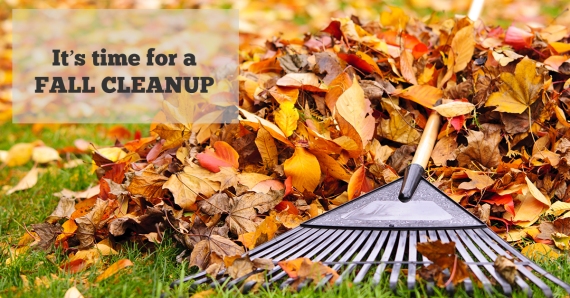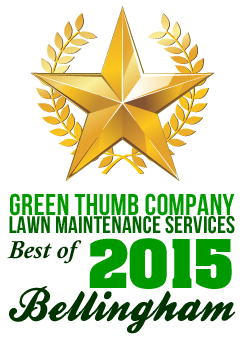
Habit #7 in Steve Covey’s
The 7 Habits of Highly Effective People is called “Sharpen the Saw.” Covey uses the common story of a woodcutter who is sawing for days on end but in the process of all that cutting, is becoming less and less productive. That woodcutter, like us gardeners, should always remember this very important fact: “
the better a tool works for us, the less we have to work”!
Winter is a prime time to make sure our tools are working as hard as they can for us. A quick check over your gardening tools at the end of each season before you put them to rest for the winter will help increase their usefulness (and your happiness) for years! This winter time tool maintenance checklist is easy for anyone to follow and will help save you money in the long run, not to mention, making your job easier when springtime rolls back around. Just remember, you do not have to wait until the end of the season to protect your tool investment.

Every time you finish a job, take the following steps to preserve their longevity:
- Rinse tools after each use, dry them thoroughly and apply a light coat of oil to all metal parts.
- You can use a stiff-bristle brush to clean stubborn, hard-to-remove dirt.
- A designated space or worktable where you can inspect your tools and perform any necessary maintenance helps to make this chore go quickly. Remember to cover the area with newspaper or plastic sheeting to both help protect the area and make it easier to clean up after you are done.
Be sure to store your tools off the ground and somewhere away from the rain and snow – moisture is bad news for tools! Garages and basements that have direct outdoor access are great storage places – as long as they are dry. If you do not have a place to store your tools and equipment, you may want to consider building or purchasing a tool shed for this purpose.
Step 1. Blades
Before you store your equipment for the off-season, sharpen or replace blades on tools that dig or cut. Digging and cutting tools’ blades get worn down faster than any other tool surface used in the garden, but filing can easily sharpen any nicked or dull blades. Maintain the sharp edge of all cutting tools by honing them using a medium-grit sharpening stone. For faster cutting, wet the stone with water or with honing oil, depending on the type of stone you’re using.
Safety Alert! Wear heavy gloves when cleaning or sharpening sharp cutting tools. Wear goggles when using a wire brush to remove rust and dirt. Sharpen very dull hedge trimmer blades by moving a file away from and diagonally across the sharp edge, making sure you maintain the factory bevel. Then decrease the angle slightly and hone just the last 1/16” of the blade with a sharpening stone. If your trimmer has a serrated blade, do not attempt to sharpen it. Check to be sure that all blades for power equipment are balanced so they will not vibrate off during use and cause possible injury or damage. Most digging tools are not sold sharpened, so you should to sharpen them from the very start. The more you use your digging tools, the duller they get. File the working edge to a 45-degree bevel with a coarse file. Since a bow saw cuts in both directions, use a triangular file to sharpen both sides of each of the saw’s teeth to a 45- to 60-degree bevel. To keep track of where you are, file every other tooth starting at one end of the blade – then file the remaining teeth the same way, working from the opposite end. Always file toward the sharp edge and pay attention to what you are doing. This is not the time to multitask!
Helpful Tip: Clamp a pair of boards on the blade and lock it in a bench vise so you will not have to keep changing the blade position in the vise. Once the blades have all been sharpened and before you store these tools for the off-season, use that wire brush to remove surface dirt or rust. Wipe the metal down with a light oil to protect it from rust, especially if you store your tools in a damp garage or shed.
 Step 2. Handles
Step 2. Handles
Check your handles of each of your tools for any splinters, cracks or breaks. Smooth weathered, rough wooden handles with a medium-grit emery cloth – it will not tear as easily as sandpaper and it wraps around the handle easier. Tool handles should be smooth enough to slide your hand along without catching. If the wood is very rough, first sand across the grain in a “shoe-shine” fashion, then finish it up by sanding along with the grain. Of course, tools with fiberglass handles will not have these issues, so skip right past this step to number 3…
Helpful Tip:
Wipe dry handles down with a heavy coat of linseed oil at the end of the season to rejuvenate and protect the wood over the winter months. Sometimes repairing a handle is not a safe option. In these cases, it may be worthwhile to replace the handle of a favorite, high quality tool – Use a ball-peen hammer or a block of wood with a nail hammer to knock the tool head out of the ferule on the handle. Consider fiberglass when replacing your tool handles – it is lighter and easier to maintain!
Step 3. Mower Maintenance
Before you give your lawn mower the season off, empty out the fuel entirely by running the mower until it runs out of gas and the motor comes to a stop – don’t just dump it out. Change the oil and remove spark plugs – changing the spark plugs, if necessary. Reinstall the spark plug without connecting the ignition cable, and add a small amount of oil to the crankcase to store. 
Safety Alert! Again, be sure that all blades for power equipment are balanced so they will not vibrate off during use and cause possible injury or damage
Never store a dirty mower! Not only will the care you take now help extend the life of your mower, cleaning out last season’s grass from underneath the mower is a dirty job – but SO much better than having to deal with old grass in the spring!
Thoroughly clean the engine and frame of the mower, on top and underneath, using a scraper to remove any built-up dirt and grass clippings on the underside of the mower. Rinse completely with a garden hose. Once it is clean, check the blade’s condition for wear and tear. If the blade needs sharpening, use a heavy file to remove dull edges or (better yet) simply replace it so it’s ready come spring.
Step 4. Weed Wacker Winterization
Remove all dirt, grease and debris from the trimmer using a stiff-bristle brush, then tighten all screws and hardware. Drain the fuel tank, remove the spark plug and add a small amount of oil into the cylinder. Pull the starting cord a couple of times to distribute the oil throughout. Reinstall the spark plug but do not connect the ignition cable, just leave it until spring.
 That is it. Perfectly maintained tools ready for use first thing in the spring when that gardening bug hits. Hope you enjoy your season and take the time to be grateful for all that we have, here in the Pacific Northwest. May your holiday season be filled with family, joy and peace. ~ Amy Harmon
That is it. Perfectly maintained tools ready for use first thing in the spring when that gardening bug hits. Hope you enjoy your season and take the time to be grateful for all that we have, here in the Pacific Northwest. May your holiday season be filled with family, joy and peace. ~ Amy Harmon
If you are in need of a residential or commercial yard clean up or grounds maintenance work, give us a call and tell us about your landscaping needs. We would be happy to give you a free estimate and work with you to give your landscaping the care it needs this season.
Our Garden and Winter Yard Clean Up services include pruning, leaf clean up, branch and debris clean up, mulching, hedge and shrub trimming, weed control, fertilizing, increasing curb appeal, yard waste removal, weeding, yard clean ups, spreading new beauty bark or gravel, planting and/or removal of plants, and much more. Remember to mulch now to protect your plants before it snows! Call Green Thumb Company at (360) 671-LAWN for a free estimate, or Request a Quote directly from our website.

 Green Thumb Company Receives US Commerce Association Best of Bellingham Award 2015
Green Thumb Company Receives US Commerce Association Best of Bellingham Award 2015
 Whether you’re hoping to put in a new vegetable bed, renovate your ornamental shrub borders, design your perennials garden or create a new project from scratch, it’s important to jump into the planning phase as the icicles are dripping from the eaves. If you wait until the spring sunshine to start your planning, be ready to wait even longer to watch your garden grow. Don’t let winter get away from you. Jump into your project now – even as you finish mulching your garden beds and start checking off your Christmas shopping list.
Whether you’re hoping to put in a new vegetable bed, renovate your ornamental shrub borders, design your perennials garden or create a new project from scratch, it’s important to jump into the planning phase as the icicles are dripping from the eaves. If you wait until the spring sunshine to start your planning, be ready to wait even longer to watch your garden grow. Don’t let winter get away from you. Jump into your project now – even as you finish mulching your garden beds and start checking off your Christmas shopping list.







 Habit #7 in Steve Covey’s The 7 Habits of Highly Effective People is called “Sharpen the Saw.” Covey uses the common story of a woodcutter who is sawing for days on end but in the process of all that cutting, is becoming less and less productive. That woodcutter, like us gardeners, should always remember this very important fact: “the better a tool works for us, the less we have to work”!
Habit #7 in Steve Covey’s The 7 Habits of Highly Effective People is called “Sharpen the Saw.” Covey uses the common story of a woodcutter who is sawing for days on end but in the process of all that cutting, is becoming less and less productive. That woodcutter, like us gardeners, should always remember this very important fact: “the better a tool works for us, the less we have to work”!





